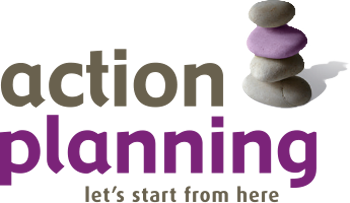Building the effectiveness of a leadership team
HR Team Building -YMCA London City and North
“From the proposal, which was exciting enough, Tracy really enabled that to come to life. She was able to provide and instil a level of confidence in individuals to share with her, which was very well received. I would both commend and recommend Tracy. After she departed the team were profusely positive about the experience we had gone through.”
Dr Gillian Bowen, CEO, YMCA London City and North
Background
In 2021/22 we worked with YMCA London City and North following the merger of two other London YMCAs. We provided strategic planning guidance to the CEO, Gillian Bowen, as she worked on a new strategy for the organisation, soon after it formed from the merger.
Two years later, with the new strategy well established, Gillian felt it was time to carry out some team building, to strengthen the cohesion among her executive team and heads of services. Action Planning HR specialist Tracy Madgwick took the brief.
“We went out to a range of consultants to ask for support and received various of submissions,” said Gillian. “We felt that Action Planning’s approach would elicit the best outcome, the price was reasonable and the proposal was nicely detailed. It allowed for individuals to have their own time in liaison with the consultant as well as then collectively. We had also had a good experience working with Action Planning before and liked Tracy’s style and practice.”
Brief
Now in the third year of a three-year strategy, Gillian was keen to examine what the organisation needed from a variety of departments, what could or should be done to support cohesion around the SLT function; to understand the synergies, camaraderie and leadership style of the senior leadership team. Gillian wanted to “ensure that leadership was not just something the Trustees or the Executive do, that it manifests itself in the day-to-day life of the charity”. We were asked to deliver a half-day session away from the daily routine to see what they could learn and what changes they could implement going forward.
Process
Tracy suggested using the C-Me tool, which uses psychometrics to profile individuals in terms of key areas such as self-awareness, motivation, empathy, social skill and stress management. All 10 of the Executive Team and service heads were asked to complete the C-Me questionnaire, Tracy then spoke to them all individually for 30 minutes to give feedback about their own C-Me profile. This gave them all a chance to reflect with Tracy on their individual strengths and weaknesses.
Tracy followed this up with a half-day workshop, where they looked at the C-Me profile of the group and what this revealed about the strengths and weaknesses of the wider management team as a whole. Tracy drew their attention to how the strongest, most dominant styles affected the way that the teams worked.
She then posed some further questions, looking more at how the management group interacted with the rest of the organisation, eg how the balance within the group might affect organisational culture, perception of the leadership team by the wider organisation, and what gaps may emerge when under pressure?
The workshop concluded with an exercise in which everyone shared how they preferred to be communicated with, according to their C-Me preference, and then some planning of next steps that they would take away to embed back into the workplace.
“I had never come across the C-Me tool,” said Gillian. “Sometimes when undertaking this type of profiling there can be a nervousness around it, but looking at the tool and talking further with Tracy, it just seemed to be relevant for our organisation. I really like it as a tool, I must say. It is quite user-friendly and functional and not too time intensive or scary in terms of individuals completing it.
“It was also important that it did not end up being a standalone exercise – that we had the potential to carry the learnings of this into our planning and the workings of the SLT.”
Outcome
As a result of Tracy’s work with them, Gillian and her team made a number of changes to a staff survey that they had been preparing to send out, putting in some additional questions that addressed some of the wording they had come up with in the workshop.
“Straight off the bat, our Head of HR and Director of Corporate Services said we need to make some changes to the survey as a result of the C-Me exercise. In particular our Head of HR wanted to adjust some of the leadership-type questions based on the development workshop with Tracy, as well as what we had elicited from the C-Me tool. She felt it gave better structure to the type of information that we wanted to receive back.
“We have also been looking at how we can take forward aspects of C-Me in the senior leadership management and how that lies within our learning management system. We understand where we are. We understand a bit better why people work as they do. We now need to work on understanding what it is that we need to adapt in our communication style with individuals and how they do that in reverse.”
Consultant’s insight
Taking time out of very busy diaries to spend time thinking about how management teams work together is something that organisations don’t do very often, but when they do they value the importance of it.
There is real power in using a psychometric tool to support the understanding of how teams work together, because it gives people a language to use when describing differences and similarities and potential areas of harmony and conflict. This opens the door to more honest conversations about working relationships.
I would recommend that it’s good to do this on an annual basis, particularly recognising that there will always be turnover within management teams.
